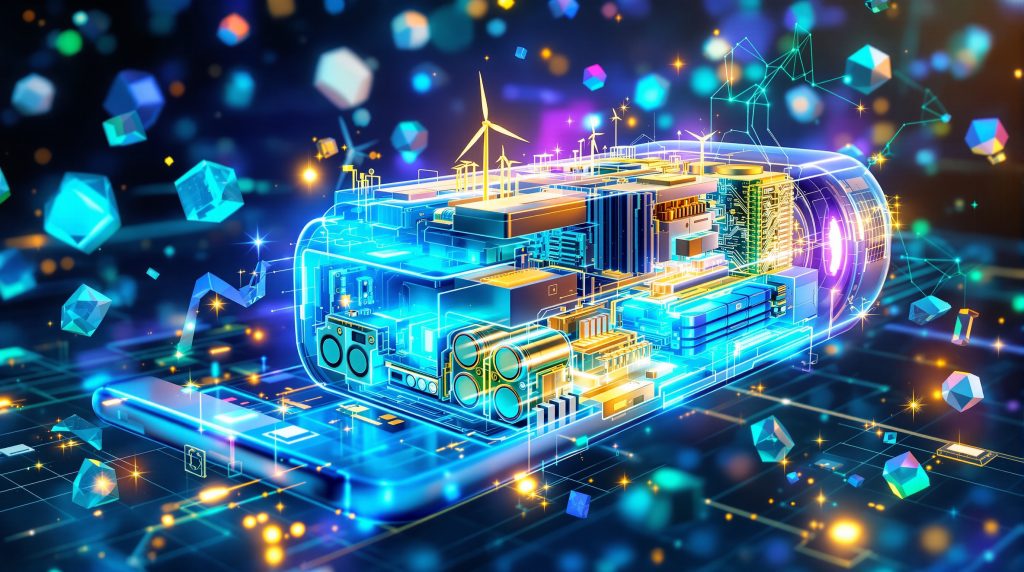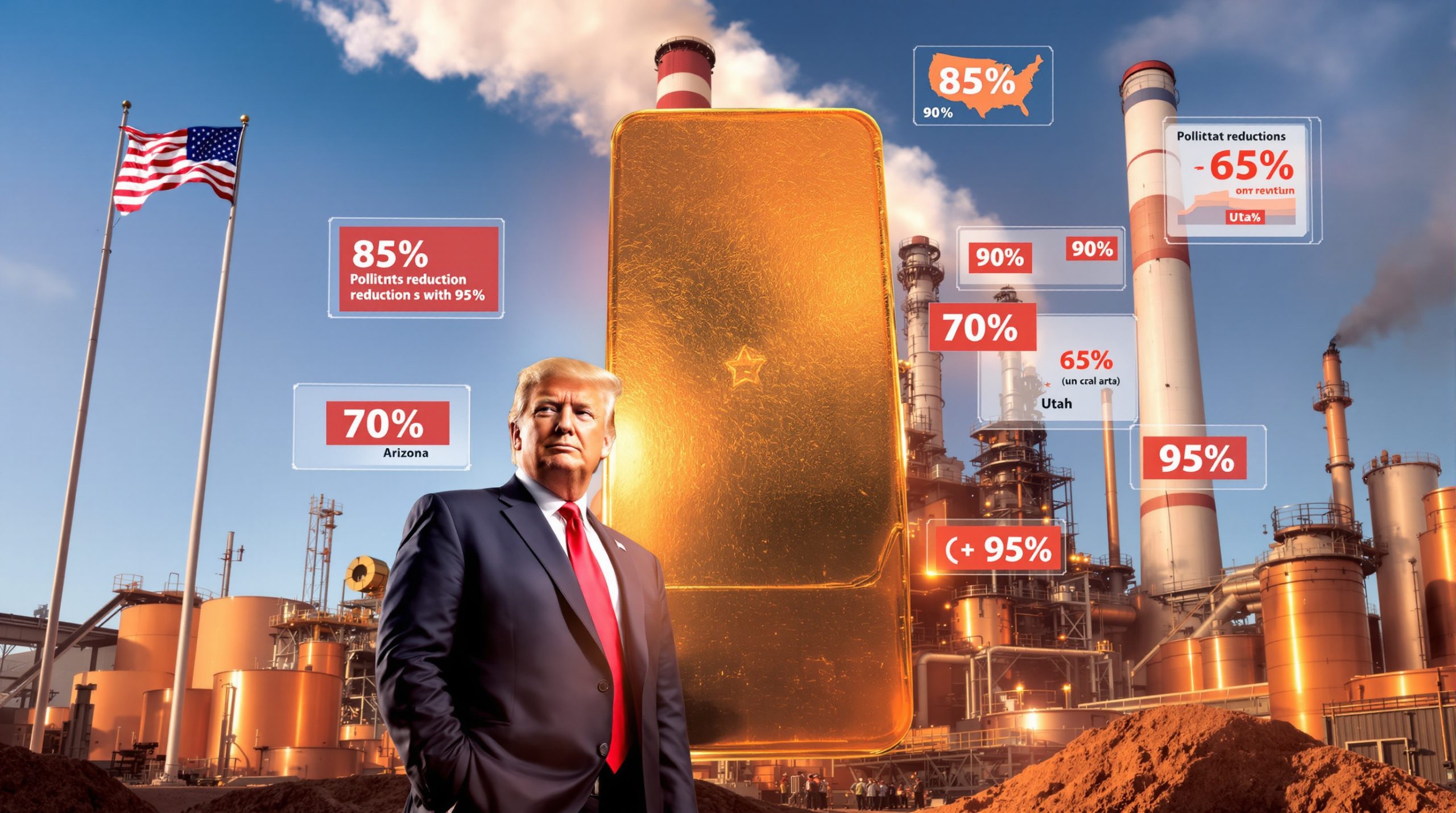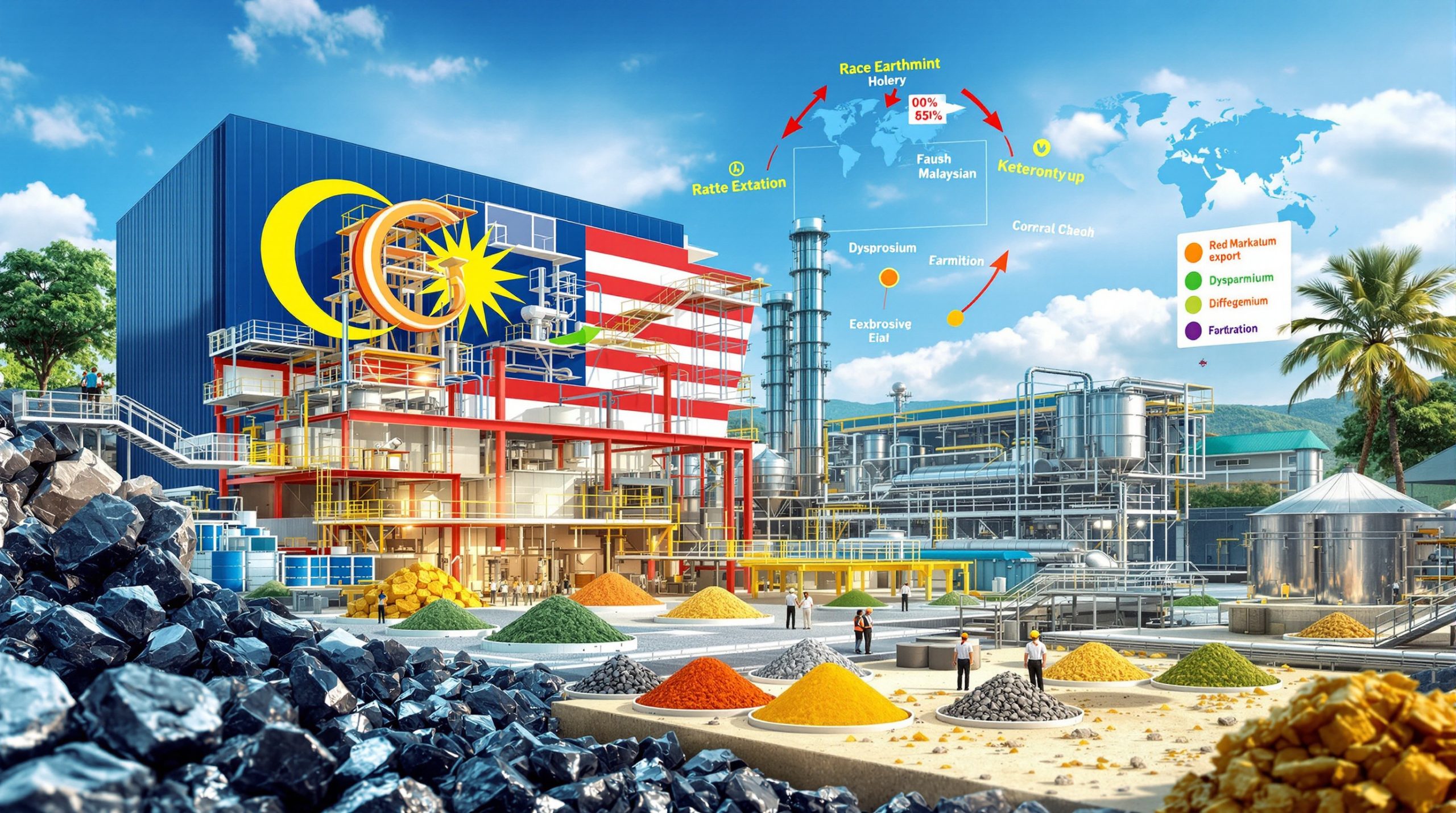The modern technological era depends on a fundamentally different set of materials than previous industrial periods. While coal, iron, and copper once defined economic power, today's digital civilization relies on critical minerals in technology that power smartphones, enable renewable energy systems, and drive the clean energy transition. These materials represent far more than geological curiosities; they form the essential foundation linking Earth's deep processes to the technologies shaping our future. Furthermore, understanding their role becomes crucial as energy transition security depends heavily on reliable access to these resources.
Understanding the Technology-Mineral Connection
Critical minerals encompass materials that fulfill two essential criteria: high economic importance and high supply vulnerability. According to the U.S. Geological Survey, 50 minerals currently meet these standards, though the European Union maintains a separate list of 30 critical raw materials reflecting different regional priorities and industrial dependencies.
The criticality designation extends beyond simple geological scarcity. A mineral achieves critical status when supply disruptions would significantly impact national economic security, regardless of global abundance. This framework explains why lithium, despite being relatively common in Earth's crust, ranks as critically important due to concentrated processing capabilities and rapidly expanding demand.
Economic importance intersects with supply concentration to create vulnerability. China controls over 60% of lithium refining and nearly 90% of rare earth element processing, while the Democratic Republic of Congo produces more than 70% of global cobalt. This geographic concentration transforms otherwise manageable supply chains into potential bottlenecks for entire industries.
The Digital Revolution's Hidden Dependencies
Modern electronics depend on an intricate web of mineral resources that most consumers never consider. Silicon forms the semiconductor foundation, requiring purity levels exceeding 99.9999999% for advanced microprocessor manufacturing. As process nodes shrink below 5 nanometers, purification requirements become even more stringent, with most production concentrated in China, Russia, and several European nations.
Gallium and germanium enable advanced communication networks through their unique semiconductor properties. These elements facilitate high-frequency applications in 5G infrastructure and satellite communications, with gallium particularly crucial for compound semiconductors used in power electronics and radio frequency applications.
Rare earth elements power data storage and processing capabilities across multiple technology sectors. These materials separate into two functional categories:
- Light rare earths (lanthanum, cerium, praseodymium, neodymium): primarily used in permanent magnets and catalysts
- Heavy rare earths (dysprosium, terbium, europium): essential for high-temperature applications and specialised electronics
The distinction becomes crucial for understanding supply constraints, as heavy rare earths face more limited geological distribution and higher extraction complexity.
Clean Energy's Mineral Foundation
The renewable energy transition has created unprecedented demand for specific critical minerals. Lithium consumption is projected to increase approximately 40-fold between 2020 and 2040, driven primarily by battery electric vehicles and stationary energy storage systems. In addition, this growth necessitates innovative approaches such as direct lithium extraction to meet expanding requirements.
Neodymium and dysprosium create high-performance permanent magnets essential for direct-drive wind turbines and electric vehicle motors. A single 3-5 MW wind turbine requires 200-600 kg of rare earth elements, with neodymium content typically reaching 120-150 kg and dysprosium additions of 20-30 kg for thermal stability.
Copper maintains critical importance across all renewable energy applications, from electrical transmission infrastructure to generator windings. The International Copper Association estimates that renewable energy systems require 5-8 tons of copper per 3-5 MW wind turbine, while solar installations demand approximately 4-5 tons per megawatt of installed capacity.
How Do Critical Minerals Power Consumer Electronics?
Modern consumer electronics represent some of the most mineral-intensive products in human history. Understanding their composition reveals the complex supply chains underlying seemingly simple devices and explains why disruptions in specific mineral supplies can halt production across multiple manufacturers.
Inside Your Smartphone's Mineral Composition
A typical smartphone contains approximately 62 different elements from the periodic table, sourced from an average of 12-15 countries across six continents. This complexity makes smartphone production particularly vulnerable to supply chain disruptions affecting any single critical mineral in technology applications.
Battery systems represent the most mineral-intensive component, utilising lithium-ion chemistry with specific material requirements:
| Battery Component | Mineral Content | Typical Mass per 3000 mAh Battery |
|---|---|---|
| Cathode Material | Lithium, Cobalt, Nickel, Manganese | 8-12g lithium, 6-10g cobalt, 4-6g nickel |
| Anode Material | Graphite | 15-20g synthetic graphite |
| Electrolyte | Lithium salts | 2-3g lithium compounds |
| Current Collectors | Copper, Aluminium | 3-5g copper foil |
Display technology utilises rare earth phosphors in precise formulations. LCD and OLED screens incorporate yttrium oxide (Y₂O₃) as a matrix with europium (Eu³⁺) and terbium (Tb³⁺) as activators, typically at concentrations of 1-3% by weight. Terbium content in display phosphors reaches approximately 50-200 parts per million in final formulations.
Camera lens systems benefit from lanthanum-containing optical glass that reduces chromatic aberration through modified refractive index properties. Modern smartphone camera lenses require 0.5-2 grams of lanthanum-containing compounds per device, enabling the multi-lens systems that deliver professional-quality photography.
Haptic feedback systems utilise neodymium-iron-boron (NdFeB) magnets with specific performance characteristics:
- Magnetic strength: 1.2-1.4 Tesla remanence
- Composition: Nd₂Fe₁₄B with dysprosium additions
- Dysprosium content: 2-5% by weight for high-temperature stability
Computing Hardware's Elemental Requirements
Microprocessor manufacturing relies on ultra-pure silicon substrates with contamination levels measured in parts per billion. Advanced logic chips require single-crystal silicon wafers with specific crystallographic orientation and minimal defect density. The purification process involves multiple stages of chemical refinement and zone melting to achieve semiconductor-grade specifications.
Hard drive functionality depends on rare earth magnetic materials in multiple components. Read/write heads incorporate giant magnetoresistance (GMR) sensors using specialised magnetic multilayers, while permanent magnet motors for disk rotation require neodymium-based alloys. Modern solid-state drives reduce rare earth dependence but increase demand for specialised memory compounds incorporating yttrium and other elements.
Memory storage systems integrate various critical minerals depending on technology type. DRAM utilises hafnium oxide for high-dielectric-constant applications, while flash memory incorporates tungsten for interconnects and specialised barrier layers. Emerging memory technologies like phase-change memory require tellurium-based compounds with unique electrical switching properties.
Why Are Electric Vehicles Driving Critical Mineral Demand?
Electric vehicles represent the single largest driver of critical mineral demand growth, transforming these materials from niche industrial inputs into strategic commodities that governments monitor as closely as petroleum reserves. The scale of this transformation becomes clear when examining specific mineral requirements and projected market growth.
Battery Technology's Mineral Intensity
Battery electric vehicles require substantially more critical minerals than conventional vehicles, with lithium-ion battery packs representing the most mineral-intensive component. A typical 60-100 kWh battery pack contains 8-12 kg of lithium, though this varies significantly based on chemistry selection.
Cobalt content varies dramatically across battery chemistries, creating both supply challenges and optimisation opportunities. Traditional NMC (nickel-manganese-cobalt) batteries require 5-10 kg of cobalt per battery pack, while newer LFP (lithium iron phosphate) chemistries eliminate cobalt entirely. This chemistry shift explains why Tesla's transition to LFP for standard-range vehicles reduces cobalt dependency while maintaining performance specifications.
Nickel requirements have increased as manufacturers optimise battery chemistries to reduce cobalt content. Modern high-nickel cathodes require 12-20 kg of nickel per battery pack, with content continuing to rise as manufacturers pursue NCA (nickel-cobalt-aluminium) formulations delivering superior energy density.
Graphite serves as the primary anode material, requiring 20-30 kg per battery pack in synthetic graphite form with >99.5% purity. Particle size optimisation and spherical morphology command premium pricing due to superior electrochemical performance, creating additional supply chain complexity.
Electric Motor Manufacturing Requirements
Permanent magnet motors dominate electric vehicle applications due to their superior power density and efficiency characteristics. These systems require neodymium-iron-boron magnets with specific composition and performance requirements:
- Neodymium content: 27-32% by weight of magnet material
- Dysprosium addition: 2-5% for high-temperature stability in motor environments reaching 120-150°C
- Operating temperature range: -40°C to +150°C for automotive applications
Copper windings enable electromagnetic field generation within motor stators, requiring 1.5-2.5 kg of copper per motor for 150-200 kW power output applications. High-conductivity copper with minimal impurities ensures maximum efficiency and heat dissipation capabilities.
Rare earth elements maintain consistent performance under temperature extremes and magnetic field variations. Dysprosium additions specifically prevent demagnetisation at elevated operating temperatures, though this heavy rare earth element faces more constrained supply chains than lighter rare earth alternatives.
Charging Infrastructure's Hidden Mineral Needs
Power electronics increasingly utilise silicon carbide (SiC) semiconductors instead of traditional silicon-based components. SiC technology offers 40-50% reduction in switching losses, enabling higher efficiency (95-98% versus 92-95% with silicon) in charging systems and onboard power conversion.
Grid connection systems demand substantial copper quantities for high-power charging applications. A 150 kW DC fast charging station requires approximately 500-800 kg of copper for transformers, cables, and connection hardware, while 350 kW ultra-fast chargers can require over 1,200 kg of copper per installation.
Energy management systems incorporate various specialised elements in control electronics, power monitoring equipment, and communication interfaces. These systems enable vehicle-to-grid functionality and smart charging capabilities, further expanding the range of critical minerals required for comprehensive EV infrastructure deployment.
What Role Do Critical Minerals Play in Renewable Energy Systems?
Renewable energy systems require massive quantities of critical minerals, with wind and solar installations demonstrating mineral intensity that rivals or exceeds traditional industrial applications. Understanding these requirements helps explain why the clean energy transition creates such significant demand pressures for specific elements.
Wind Turbine Technology Dependencies
Wind turbines represent one of the most mineral-intensive renewable energy technologies, particularly for direct-drive generator systems. Modern 3-5 MW turbines require 200-600 kg of rare earth elements for permanent magnet generators, compared to 50-100 kg for conventional gearbox turbines.
Generator magnet composition includes multiple rare earth elements with specific functional roles:
| Element | Content per Turbine | Primary Function |
|---|---|---|
| Neodymium | 120-150 kg | Primary magnetic strength |
| Dysprosium | 20-30 kg | High-temperature stability |
| Praseodymium | 15-25 kg | Corrosion resistance |
| Terbium | 5-10 kg | Magnetic coercivity enhancement |
Direct-drive systems eliminate gearboxes by utilising permanent magnet generators that operate at low rotational speeds. These systems require substantially more rare earth elements but offer improved reliability and reduced maintenance requirements over conventional turbine designs.
Copper infrastructure connects turbines to electrical grids through transformers, cables, and switchgear systems. A typical wind farm requires 5-8 tons of copper per turbine for electrical infrastructure, with offshore installations requiring additional copper for subsea cables and corrosion-resistant alloys.
Solar Panel Manufacturing Essentials
Solar photovoltaic systems rely on high-purity silicon with specifications exceeding semiconductor-grade requirements. Photovoltaic applications demand >99.9999999% (9-nines purity) silicon, with 150-200 kg per megawatt of installed capacity for crystalline silicon technologies.
Silver paste creates electrical connections within solar panels through screen-printed contacts on cell surfaces. Modern solar panels require 10-15 grams of silver per square metre of panel area, translating to approximately 100-150 kg of silver per megawatt of installation capacity. Silver's superior electrical conductivity and corrosion resistance make substitution difficult in solar applications.
Tellurium enables thin-film solar technology through cadmium telluride (CdTe) photovoltaic cells. These systems offer lower manufacturing costs but require access to tellurium supplies primarily derived as byproducts from copper refining operations. CdTe technology represents approximately 5% of global solar installations but demonstrates superior performance in high-temperature environments.
Energy Storage System Requirements
Grid-scale battery systems create enormous demand for lithium-ion battery materials at utility scale. A 100 MWh grid storage facility requires approximately 8,000-12,000 kg of lithium, along with proportional quantities of cobalt, nickel, and graphite depending on battery chemistry selection.
Vanadium flow batteries provide long-duration storage solutions for renewable energy integration. These systems utilise vanadium electrolytes in multiple oxidation states, requiring 40-60 kg of vanadium per MWh of storage capacity. Flow battery technology offers advantages for applications requiring daily cycling over 10-20 year operational periods.
Pumped hydro systems require specialised steel alloys for turbine construction and high-pressure applications. While these systems avoid battery mineral requirements, they demand substantial quantities of speciality metals including chromium, molybdenum, and tungsten for turbine components and penstock construction.
How Do Supply Chain Vulnerabilities Affect Technology Development?
Critical mineral supply chains demonstrate extreme geographic concentration that creates systemic risks for technology industries. Understanding these vulnerabilities explains why governments increasingly treat mineral security as national security and why supply disruptions can halt production across multiple technology sectors simultaneously. However, concerns about deep-sea mining concerns highlight the challenges in developing new supply sources.
Geographic Concentration Risks
China maintains dominant positions across multiple critical mineral supply chains, controlling over 60% of lithium refining capacity and nearly 90% of rare earth element processing facilities worldwide. This concentration occurred through decades of strategic investment in processing infrastructure while other nations focused primarily on raw material extraction.
The Democratic Republic of Congo controls approximately 70% of global cobalt production, with most output concentrated in the Copper Belt region of Katanga Province. Political instability, infrastructure challenges, and artisanal mining practices create ongoing supply uncertainties that affect global battery production planning.
Australia, Chile, and Argentina form the "lithium triangle" controlling approximately 75% of global lithium reserves through brine operations in high-altitude salt flats. These deposits require 12-24 months of evaporation processing, making supply responses to demand changes inherently slow and weather-dependent.
Supply concentration extends beyond extraction to processing and refining capabilities:
| Critical Mineral | Primary Producing Region | Processing Concentration | Strategic Risk Level |
|---|---|---|---|
| Lithium | South America, Australia | 60% China-controlled | High |
| Cobalt | DRC (70% production) | Limited global capacity | Very High |
| Rare Earth Elements | China, Myanmar | 90% China-controlled | Critical |
| Graphite | China, Mozambique | 70% China-controlled | High |
Geopolitical Implications for Tech Industries
Trade restrictions have already impacted semiconductor manufacturing through export controls on specific materials and technologies. The 2010 rare earth export restrictions from China demonstrated how quickly geopolitical tensions can translate into supply disruptions affecting multiple industries simultaneously.
Export controls affect clean energy deployment timelines by creating uncertainty around material availability for solar panel and wind turbine manufacturing. Companies now maintain strategic inventory levels that were previously considered economically inefficient but are necessary for supply security.
Strategic mineral reserves have become national security priorities, with governments establishing stockpiles and domestic processing capabilities. The United States Strategic National Stockpile now includes critical minerals alongside traditional defence materials, while the European Union has developed its own critical materials strategy emphasising supply diversification.
Furthermore, these developments reflect broader mining innovation trends shaping the industry's response to supply chain vulnerabilities.
Economic Impact of Supply Disruptions
Price volatility affects technology development timelines when critical mineral costs fluctuate dramatically. Lithium prices increased over 400% between 2020 and 2022 before declining substantially, creating planning challenges for battery manufacturers and electric vehicle producers.
Production delays cascade through technology supply chains when specific minerals become unavailable. The 2021 semiconductor shortage demonstrated how single-point failures can affect industries ranging from automotive to consumer electronics, with economic losses exceeding $240 billion globally.
Investment decisions increasingly factor in supply chain resilience alongside traditional economic considerations. Companies now evaluate "mineral security" as a key component of technology development strategies, influencing research and development priorities toward materials with more diversified supply sources.
What Emerging Technologies Will Drive Future Mineral Demand?
Next-generation technologies will create entirely new categories of critical mineral demand while intensifying competition for existing materials. Understanding these emerging applications helps predict future supply pressures and identifies minerals that may achieve critical status as new technologies scale commercially.
Quantum Computing's Specialised Requirements
Quantum computing systems require superconducting materials operating at extremely low temperatures, typically utilising niobium-based alloys and specialised rare earth compounds. Superconducting quantum interference devices (SQUIDs) incorporate yttrium-barium-copper-oxide ceramics requiring high-purity rare earth elements with precise stoichiometry.
Cryogenic systems maintaining quantum coherence demand specialised metal alloys with specific thermal and magnetic properties. Dilution refrigerators utilise helium-3 isotopes and specialised materials including indium, lead, and various rare earth compounds for thermal isolation and magnetic shielding applications.
Quantum sensors enable precision measurements using diamond-based nitrogen-vacancy centres and trapped-ion systems. These applications require synthetic diamond with controlled impurity levels and specialised optical materials incorporating rare earth elements for laser systems and detection equipment.
Artificial Intelligence Hardware Demands
Advanced semiconductors for AI processing require ultra-pure materials with increasingly stringent specifications. Graphics processing units (GPUs) and tensor processing units (TPUs) utilise cutting-edge semiconductor processes demanding high-purity silicon, gallium, germanium, and specialised compound semiconductors.
Data centre infrastructure supporting AI applications consumes massive copper quantities for power distribution and cooling systems. A large-scale AI training facility can require over 2,000 tons of copper for electrical infrastructure, with additional amounts for specialised cooling loops and heat exchangers.
Specialised cooling systems incorporate rare metal components in heat pipes, thermal interface materials, and liquid cooling loops. Advanced cooling solutions utilise silver-based thermal compounds, specialised alloys for heat exchangers, and rare earth elements in magnetic cooling applications for ultra-efficient data centre operations.
Space Technology and Defence Applications
Satellite systems require radiation-resistant materials capable of withstanding space environments for 10-15 year operational periods. Solar arrays utilise specialised photovoltaic cells with higher radiation tolerance, while communication systems incorporate sapphire substrates and specialised semiconductor compounds.
Aerospace alloys incorporate titanium, tantalum, and specialised refractory metals for high-temperature applications in rocket engines and spacecraft structures. These applications demand materials with precise composition control and exceptional quality standards exceeding terrestrial industrial requirements.
Defence electronics demand secure mineral supply chains with domestic sourcing capabilities for critical applications. Military systems increasingly specify materials from allied nations or domestic sources, creating separate supply chains parallel to commercial mineral markets.
How Are Recycling and Substitution Addressing Supply Challenges?
Industry responses to critical mineral supply constraints focus on two primary strategies: recovering materials from existing products through recycling, and developing alternative materials through substitution research. Both approaches face technical challenges but offer pathways to reduce dependence on primary mineral extraction. Meanwhile, improved battery recycling process technologies are becoming crucial for sustainable supply chains.
Urban Mining and Electronic Waste Recovery
Electronic waste represents a growing source of critical minerals, with global e-waste generation reaching 57.4 million tons in 2021 and projected to reach 74.7 million tons by 2030. This waste stream contains higher concentrations of valuable elements than many ore bodies currently being mined.
Smartphone recycling can recover precious and rare metals with impressive efficiency rates:
| Material | Recovery Efficiency | Typical Content per Device |
|---|---|---|
| Gold | 90-95% | 0.03-0.05g |
| Silver | 85-90% | 0.25-0.35g |
| Copper | 95-98% | 15-20g |
| Rare Earth Elements | 20-40% | 0.5-2g total |
| Lithium | 60-80% | 8-12g (battery) |
Battery recycling systems extract lithium, cobalt, and nickel through hydrometallurgical and pyrometallurgical processes. Modern recycling facilities can recover 95% of lithium, 98% of cobalt, and 96% of nickel from end-of-life lithium-ion batteries, though scaling these operations to match growing battery waste streams remains challenging.
Industrial waste streams provide alternative sources for specific critical minerals. Rare earth elements can be recovered from permanent magnet waste, electronic scrap, and industrial catalysts. Phosphor waste from fluorescent lighting contains significant concentrations of yttrium, europium, and terbium that can be economically recovered.
Material Substitution Research Progress
Sodium-ion batteries represent a promising alternative to lithium-ion technology for specific applications. While sodium-ion systems deliver lower energy density (120-160 Wh/kg versus 200-280 Wh/kg for lithium-ion), they eliminate lithium dependency and utilise abundant sodium resources. Commercial deployment began in 2023 for stationary storage applications.
Ferrite magnets can replace rare earth permanent magnets in certain applications, though with significant performance trade-offs. Ferrite materials offer 20-30% lower magnetic strength but eliminate rare earth requirements. Motor designs accommodate these limitations through increased size and modified magnetic circuit geometry.
Alternative semiconductor materials reduce silicon requirements in specific applications. Silicon carbide and gallium nitride semiconductors enable more efficient power electronics, though they require different critical minerals including gallium and specialised substrates.
Circular Economy Integration in Technology
Design for disassembly principles increasingly influence electronics manufacturing, with companies incorporating features that facilitate material recovery at end-of-life. Modular smartphone designs, standardised fasteners, and material identification marking improve recycling efficiency and reduce contamination.
Extended producer responsibility legislation drives recycling innovation by requiring manufacturers to manage product end-of-life costs. European Union regulations mandate 65% recycling rates by weight for electronic equipment, while also restricting use of certain hazardous materials in new products.
Closed-loop supply chains minimise virgin material requirements by incorporating recycled content into new products. Apple reports using 100% recycled rare earth elements in specific product lines, while Tesla aims to achieve closed-loop battery recycling that recovers all critical materials for new battery production.
What Does the Future Hold for Critical Minerals in Technology?
Critical mineral demand growth will accelerate through 2030 and beyond, driven by the convergence of electrification, digitalisation, and renewable energy deployment at unprecedented scale. Understanding projected demand scenarios and potential supply responses helps identify where shortfalls may develop and which technologies may face material constraints.
Projected Demand Growth Scenarios
Electric vehicle adoption alone will drive 400% increase in lithium demand by 2030 under current policy scenarios, rising from approximately 500,000 tons annually in 2023 to over 2 million tons by 2030. Aggressive EV adoption scenarios push requirements even higher, potentially reaching 3-4 million tons annually by 2030.
Renewable energy expansion requires 700% more rare earth elements by 2030 compared to current consumption levels. Wind turbine deployment drives most of this growth, with offshore wind farms requiring particularly large quantities of rare earth permanent magnets due to their direct-drive generator systems.
Digital infrastructure growth demands doubled copper consumption for data centres, telecommunications networks, and power distribution systems supporting increased connectivity and artificial intelligence applications. 5G network deployment alone requires 3-4 times more copper per base station compared to 4G infrastructure.
Projected annual demand by 2030:
| Critical Mineral | 2023 Demand (tonnes) | 2030 Projection (tonnes) | Growth Factor |
|---|---|---|---|
| Lithium | 500,000 | 2,000,000 | 4x |
| Cobalt | 175,000 | 350,000 | 2x |
| Nickel | 3,000,000 | 4,500,000 | 1.5x |
| Rare Earth Elements | 280,000 | 500,000 | 1.8x |
| Copper | 25,000,000 | 50,000,000 | 2x |
Innovation in Extraction and Processing
Deep-sea mining explores ocean floor deposits containing vast quantities of critical minerals in polymetallic nodules and seafloor massive sulphide deposits. These resources could supply nickel, cobalt, and rare earth elements for decades, though environmental concerns and technological challenges delay commercial deployment.
Enhanced geothermal systems access lithium-rich brines from geothermal reservoirs, potentially providing domestic lithium sources for regions lacking traditional brine deposits. Projects in Germany, the United States, and other locations demonstrate commercial viability, with production beginning at several facilities.
Biotechnology enables more efficient mineral extraction through biomining processes utilising specialised bacteria and fungi. These biological systems can extract metals from low-grade ores and electronic waste with reduced environmental impact compared to traditional chemical processing methods.
Strategic Implications for Global Technology Leadership
National mineral security strategies increasingly shape innovation priorities as governments recognise critical minerals as strategic assets comparable to energy resources. The United States, European Union, Japan, and other regions have developed comprehensive policies addressing domestic supply, international partnerships, and strategic stockpile management.
International cooperation frameworks for sustainable mining aim to balance resource development with environmental protection and social responsibility. According to the International Energy Agency, the Extractive Industries Transparency Initiative (EITI) and similar programmes promote accountability in mineral resource governance, while technical cooperation helps developing nations build sustainable mining capacity.
Technology sovereignty considerations drive investment in domestic supply development, with governments providing incentives for mine development, processing facilities, and recycling infrastructure within their territories. These policies aim to reduce dependence on potentially unreliable supply sources while building industrial capabilities in strategic sectors.
Disclaimer: Projections regarding future mineral demand and supply scenarios involve significant uncertainty and depend on policy decisions, technological developments, and economic conditions that may change substantially. Actual outcomes may vary significantly from current projections, and investors should conduct thorough due diligence before making investment decisions based on critical minerals market forecasts.
The intersection of geology, technology, and geopolitics will continue determining how successfully humanity can secure the critical minerals in technology needed for a sustainable and technologically advanced future. Success requires coordinated efforts across exploration, extraction, processing, recycling, and substitution research to build resilient supply chains capable of supporting continued technological advancement.
Looking to Capitalise on Critical Mineral Investment Opportunities?
Discovery Alert's proprietary Discovery IQ model delivers real-time alerts on significant mineral discoveries across the ASX, transforming complex geological announcements into actionable investment insights for critical minerals and technology metals. With historic discoveries like De Grey Mining and WA1 Resources demonstrating the exceptional returns possible from early identification, explore Discovery Alert's dedicated discoveries page to understand why major mineral finds can generate substantial market returns, then begin your 30-day free trial to position yourself ahead of the market.




